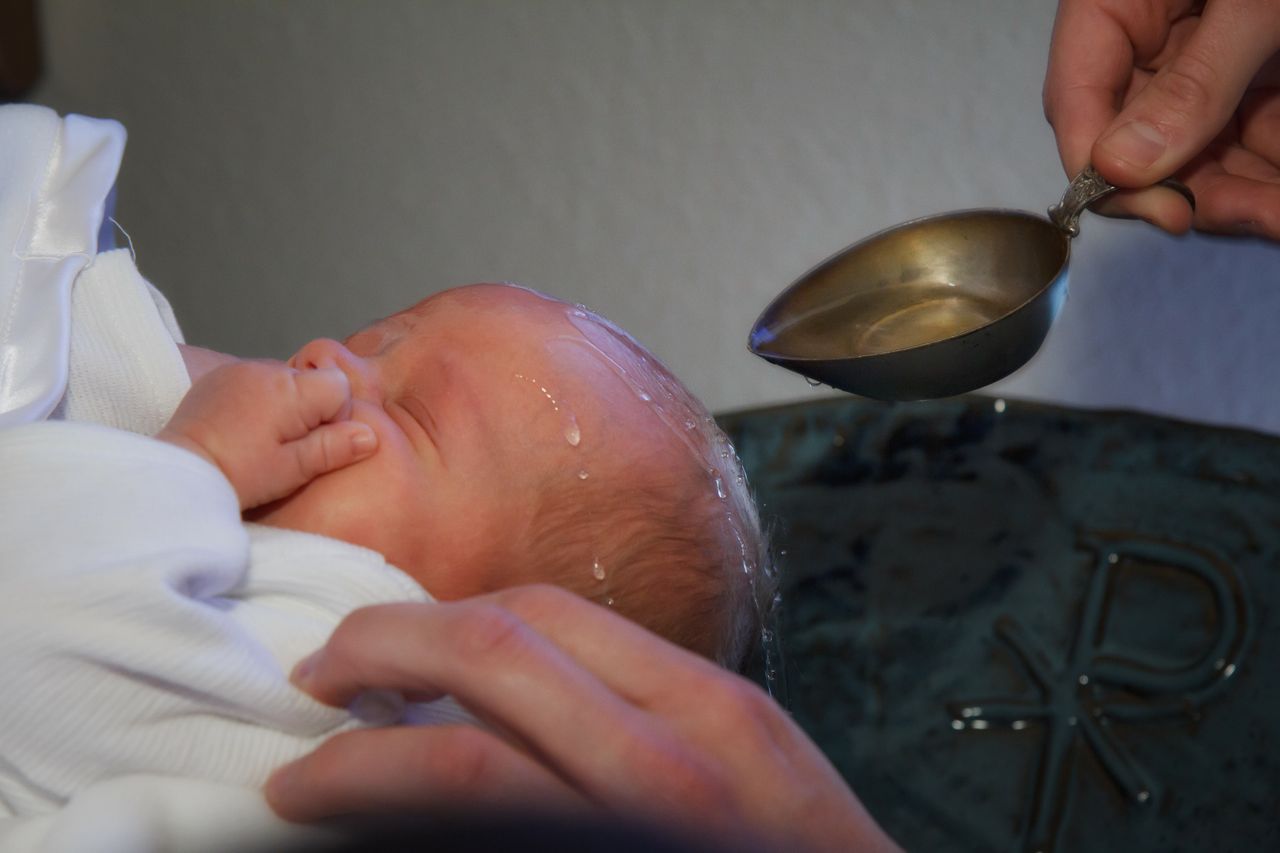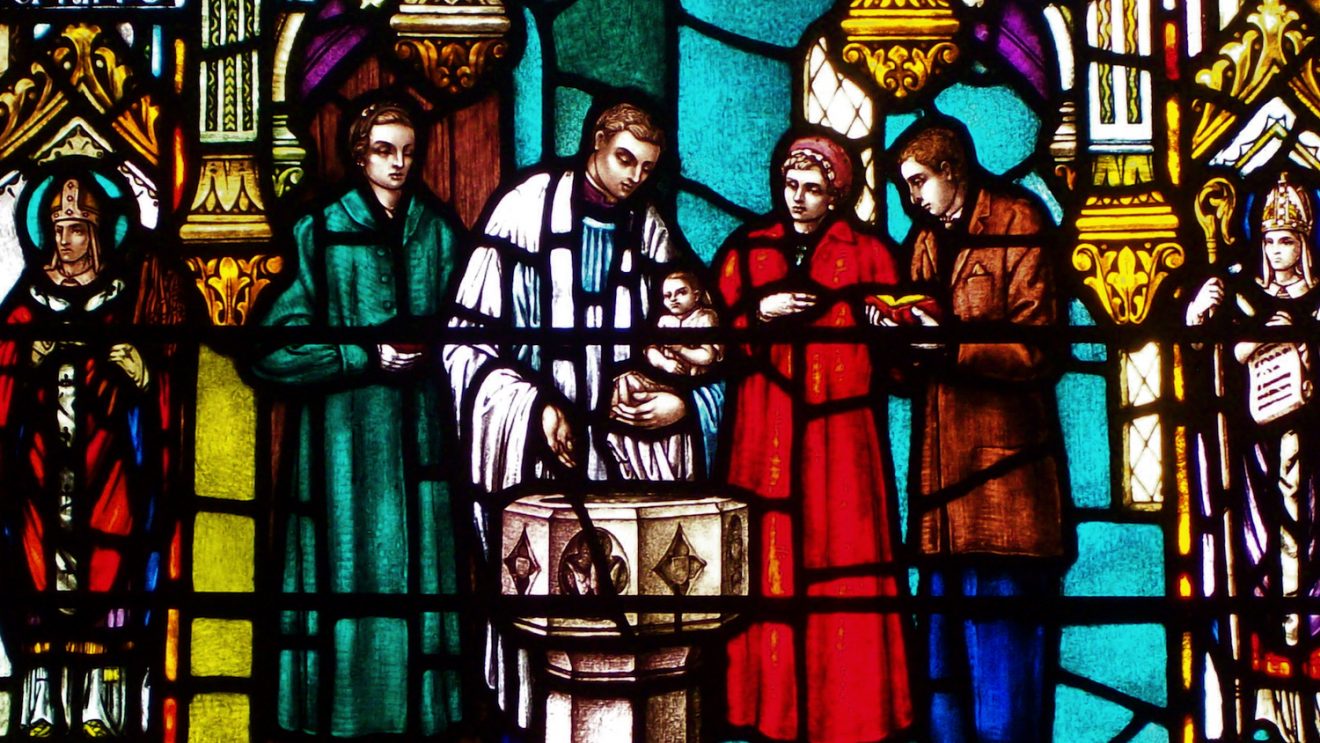“To this day, Catholics belonging to the Eastern rites receive both sacraments in infancy. Pope St. Leo I makes this relationship very clear. He compares the natural life of our bodies with the supernatural life of our souls. Baptism, he says, corresponds to our bodily birth. Confirmation corresponds to our bodily growth.” [1]
While Eastern-rite Catholics receive the Sacraments of Baptism and Confirmation together, the same cannot be said of Latin-rite Catholics. Why? In the course of this essay, it is my intention to explore both sacraments; individually first, and then jointly in an effort to explain some of the rationale for their historical “link.”
Baptism
According to the Catechism of the Catholic Church, “the Lord himself affirms that Baptism is necessary for salvation- also commanding his disciples to proclaim the Gospel to all nations and to baptize them. Baptism is necessary for salvation for those to whom the Gospel has been proclaimed and who have had the possibility of asking for this sacrament. However, although God has bound salvation to this Sacrament, he himself is not bound by his sacraments.” [2] Those, for instance, who suffer death for the sake of the faith without having received Baptism, receive a baptism of blood; for others, who do not receive the Sacrament through no fault of their own, receive baptism by desire. In both instances, they too become mystically joined to the Body of Christ.
Baptism, therefore, provides mankind with the means of supernatural rebirth or regeneration. The prefix “re” is especially important, in that it points toward a reality that while we are born naturally through the participation of our parents, Baptism opens the door to a supernatural life in order that body and soul not endure a “double death.” Our regeneration in the supernatural life gives hope to our eternal soul. [3] Hence, the sacrament “marks the person who receives it as being born into the new life of Christ. The primary effect of this experience of rebirth is grace, a rich reality of the presence of God in the life of the person, marked by the forgiveness of original sin and all other personal sin, and incorporation into the Church, the Body of Christ, and the priesthood of the faithful. Catholics understand this mark as indelible, never to be repeated. Nothing can erase the fact that Christ has claimed us as his own. Nothing can change the fact that the Holy Spirit has marked the Christian with the seal of the Lord for the day of redemption.” [4]
Confirmation
“When the Roman Catechism was published in 1556, the faithful were warned regarding the Sacrament of Confirmation. ‘They are found in the holy Church of God many by whom this sacrament is altogether omitted; while very few seek to obtain from it the fruit of divine grace which they should derive from its participation.’” [5] Indeed, some twelve centuries prior, St. Jerome, in an address to a Luciferian Christian, forcefully noted: “Do you not know that the imposition of hands after Baptism for an invocation of the Holy Spirit is the custom of the Churches? Do you demand to know where it is written? In the Acts of the Apostles. And even if it had not the authority of Scripture, the consent of the whole world in this matter would confer on it the force of precept. For there are many other observances in the Church which, though due to tradition, have acquired the authority of the written law, as for instance the dipping the head three times in the baptismal font, and then, on going out of tasting a mixture of milk and honey which signifies infancy; and again, of not worshipping on bended knee nor fasting on Sunday and on all the days of Pentecost; and there are many other unwritten practices on the observance of which is not vindicated by reason.” [6]
With regard to this sacrament, the Church notes the dual traditions present in the East and West. “The practice of the Eastern Churches gives greater emphasis to the unity of Christian initiation. That of the Latin Church more clearly expresses the communion of the new Christian with the bishop as guarantor and servant of the unity, catholicity and apostolicity of his Church, and hence the connection with the apostolic origins of Christ’s Church.” [7] Despite these differences, there remains unity regarding the purpose of the Sacrament of Confirmation. “The baptized are more perfectly bound to the Church and are enriched with a special strength of the Holy Spirit. Hence, they are, as true witnesses of Christ, more strictly obliged to spread and defend the faith by word and deed.” [8] The Church therefore pronounces the effects of Confirmation as: bringing an increase and deepening of baptismal grace; rooting us more deeply in the divine filiation which makes us cry ‘Abba! Father!’; uniting us more firmly to Christ; increasing the gifts of the Holy Spirit within us; rendering our bond with the Church more perfect; and giving us a special strength of the Holy Spirit to spread and defend the faith by word and action as true witnesses of Christ, to confess the name of Christ boldly, and never to be ashamed of the Cross.” [9] Similar to Baptism, we are left with an indelible spiritual mark, a seal of the Spirit for eternity.
History
Thus far, having briefly described the Sacraments of Baptism and Confirmation, we have yet to address their unified realities. At the Easter Vigil, we are aware that, forming a long process of conversion, catechumens receive three sacraments together- Baptism, Confirmation, and Eucharist. As such, two glaring questions remain. If the Holy Spirit is received in Baptism, what does Confirmation do that Baptism does not? Also, given the practice of the Eastern Churches (Catholic and Orthodox) of conferring the three sacraments on infants, why has the Latin Church separated Baptism from Confirmation with the exception of the Easter Vigil?
Recalling Jesus’ baptism by John, the early Christian community remembered this symbolic cleansing as evidence of a turning point in the life of a human person- a change that would forever alter one’s lifestyle, world view, or outlook. In fact, some scholars contend that had Jesus not been baptized, the importance of Baptism may have been diminished. Jesus’ action, however, “provided new meaning to the baptismal action, which had been used in various ways prior to his time as a gesture of purification. Jesus seems to have experienced the overwhelming love of the Father at this moment. ‘You are my beloved Son. On you my favor rests.’ (Mk 1:10-11) Through this, Jesus is able to connect this action with the affirmation of the Father’s love, a gesture that would enable people in the early Church to experience the Holy Spirit.” [10] Therefore, the working of the Holy Spirit is “essential to the growth of the Church and the initiation of the individual- both being attributed to the rite of baptism. Outside the Acts of the Apostles, there is no reference to any rite of initiation except that of water and a form of words. In three famous texts in Acts, the link between Baptism with water and the gift of the Spirit, so clearly evidenced everywhere else, seems to break down. In Acts 8:4-18, Peter and John go up from Jerusalem to Samaria to lay hands on the converts whom Philip the deacon had already baptized, that they might receive the Holy Spirit; for it had not yet fallen on them. In Acts 10:44, the Spirit again comes down upon Cornelius and his pagan household even before baptism is given. In Acts 19:1-7, Paul is reported to have baptized some disciples of John the Baptist and then, when Paul laid hands upon them, the Holy Spirit came on them.” [11]
A century later, around the year 200, Tertullian “begins to speak of a ritual of initiation that is considerably developed. These initiatory rites not only include a washing in water, but follow this up with an anointing, signing with the cross, and the imposition of hands. A few years later, in Rome, the Apostolic Tradition of Hippolytus lays down that the newly baptized, upon emerging from the baptismal waters, are to be anointed by a priest and then, after dressing, led to the bishop. The bishop is to pray over them with outstretched hand, asking God: ‘Make them worthy to be filled with the Holy Spirit…that they may serve thee according to thy will.’ He then pours consecrated oil upon the head and signs the forehead, saying: ‘I anoint thee with holy oil in God the Father Almighty and Christ Jesus and the Holy Ghost.’” [12] Pope Cornelius, in a letter regarding the heretic Novatus (251-253 A.D.), noted that “while exorcists were still trying to help him he fell desperately ill, and since he was thought to be at the point of death, he received baptism by affusion…And when he recovered he did not receive the other things of which one should partake according to the rule of the Church, in particular the sealing by a bishop. Without receiving these, how could he receive the Holy Ghost?” [13] In The Sacraments (390-391 A.D.), St. Ambrose of Milan notes that “baptism is followed by a spiritual signing, as you have heard in the reading today; for after the font it but remains to perfect the work, when, at the invocation of the priest the Holy Spirit is poured out, the spirit of wisdom and understanding, the spirit of counsel and fortitude, the spirit of knowledge and piety, the spirit of holy fear: seven powers, as it were, of the Spirit.” [14] “By the fourth and fifth centuries confirmation, or consignation, while still closely associated with Baptism, was also clearly distinguished from it. According to Cyril of Jerusalem, just as Christ after His Baptism received the Spirit in the form of a dove, so the oil with which the newly baptized Christian is anointed symbolizes the Spirit Who sanctifies him. Cyril of Alexandria would state that ‘the rite is the symbol of our participation in the Holy Spirit.’” [15] Indeed, the connection between Baptism and Confirmation would continue to provoke curiosity. St. Thomas Aquinas pondered as to whether the character of confirmation presupposed the necessity of the baptismal character. He ultimately answered that “the character of confirmation, of necessity supposes the baptismal character: so that, in effect, if one who is not baptized were to be confirmed, he would receive nothing, but would have to be confirmed again after receiving baptism. The reason of this is that, confirmation is to baptism as growth to birth. It is clear that no one can be brought to perfect age unless he be first born; and in like manner, unless a man be first baptized, he cannot receive the sacrament of confirmation.” [16]
As the Church deepened its understanding regarding these sacraments and their place in the initiation of new Christians, the Latin and Eastern rites also developed a different understanding as to when, how, and by whom these sacraments should be administered. Osborne notes that from the fourth through sixth centuries, three major factors would contribute to a separation of the rite of initiation, and in the last instance, to an eventual difference of the rite between Western and Eastern Churches. First, the de-urbanization of Christian communities posed pastoral questions for what should be done with those living in rural areas, particularly remote ones. As more people began moving from the cities, they had less access to the episcopos (bishops), who would ordinarily confer the Sacrament of Confirmation, as it would come to be known. As greater separation occurred between the presbyteroi baptism and episcopos anointing, Rabanus Maurus, who died in 835 would remark that “the first anointing done after baptism, done by the presbyter, effects the descent of the Spirit and the consecration of the Christian; the second anointing, the episcopos chrismation and the laying on of hands, brings the grace of the Spirit into the baptized with all the fullness of sanctity, knowledge and power.” [17] As Osborne notes, this separation would ultimately lend some theological justification to two distinct rites. Second, as infant baptism began to dominate adult baptism, this would also lead to greater space between the two sacraments, with Confirmation being conferred as the child grew in maturity, able “to make an adult profession of faith and become a soldier of Christ.” [18] Thirdly, the re-ordination of heretics occasioned a change in the East. “Early on, thanks to Tertullian, the West had developed a fairly technical vocabulary for ordination: ordo, ordinatio, etc., whereas the East retained the more biblical terms connected with the laying on of hands: cheirotonein, cheirotetein; cheirotenia, cheirothesia. Many of the early Eastern councils had to deal so strongly with this matter of re-ordination that gradually the laying on of hands was restricted almost entirely to ordination, while chrismation took over the place of such laying on of hands in the baptismal rite. Because of this change in the Eastern Church, a division took place that would last for centuries: the Western Church celebrating confirmation with the laying on of hands, and the Eastern Church with the anointing with chrism. So it was that two different ways of Christian initiation developed.” [19]
Sources: Aquinas, St. Thomas, Whether the character of Confirmation presupposes of necessity, the baptismal character, The Summa Theologica of St. Thomas Aquinas, Second and Revised Edition (1920), Online Edition Copyright, 2003; Catechism of the Catholic Church, Libreria Editrice Vaticana, 1994; Feider, Rev. Paul A., The Sacraments: Encountering the Risen Lord, IN: Ave Maria Press, 1986; Hardon, Rev. John A., The Sacraments of Baptism and Confirmation, The Catholic Faith, (July/August 1998); Hellwig, Monika, The Meaning of the Sacraments, OH: Pflaum, 1972; Jurgens, William A., The Faith of the Early Fathers, MN: Liturgical Press, 1979; Kelly, J.N.D., Early Christian Doctrines, NY: Harper Collins, 1978; Osborne, O.F.M., Rev. Kenan B., The Christian Sacraments of Initiation, NY: Paulist Press, 1987; Santa, C.SsR., Rev. Thomas M., The Essential Catholic Handbook of the Sacraments, MO: Liguori, 2001; Searle, Mark, Christening: The Making of Christians, MN: Liturgical Press, 1980.
Footnotes: [1] Hardon, S.J., Rev. John, The Sacraments of Baptism and Confirmation, p.1; [2] CCC, #1257; [3] Hardon, S.J., Rev. John, The Sacraments of Baptism and Confirmation, p.2; [4] Santa, C.SsR., Rev. Thomas M., The Essential Catholic Handbook of the Sacraments, pp.32-33. [5] Hardon, S.J., Rev. John, The Sacraments of Baptism and Confirmation, p.6; [6] Jurgens, William A., The Faith of the Early Fathers, p.189; [7] CCC, #1292; [8] Ibid, #1285; [9] Ibid, #1303; [10] Feider, Rev. Paul A., The Sacraments: Encountering the Risen Lord, pp.16-17; [11] Searle, Mark, Christening: The Making of Christians, pp. 109-110; [12] Ibid, p.111; [13] Ibid, p.113; [14] Jurgens, William A., The Faith of the Early Fathers, p.176; [15] Kelly, J.N.D., Early Christian Doctrines, pp.432-434; [16] Aquinas, St. Thomas, Whether the character of Confirmation presupposes of necessity, the baptismal character, The Summa Theologica of St. Thomas Aquinas, Second and Revised Edition (1920), pp.1-2; [17] Osborne, O.F.M., Rev. Kenan B., The Christian Sacraments of Initiation, pp.122-123; [18] Ibid, p.123; [19] Ibid, pp.123-124.








